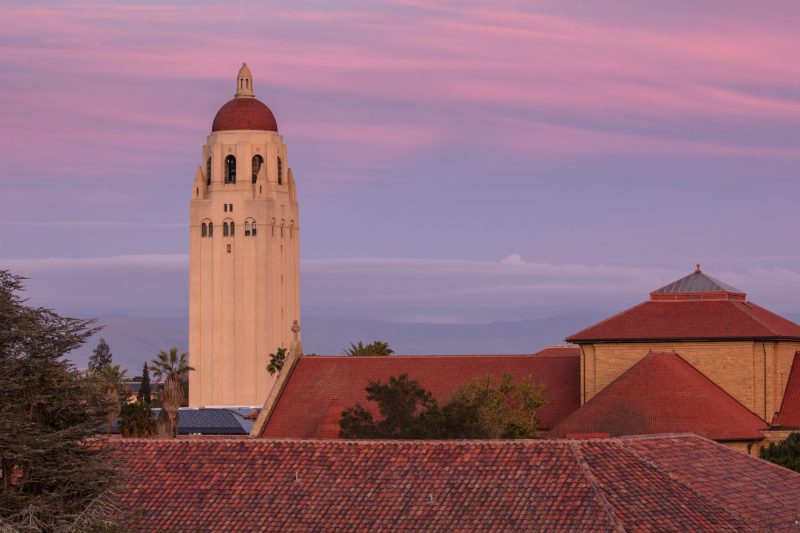Following Marc Tessier-Lavigne’s resignation as Stanford president, next steps on finding an official successor are in their early stages, the Board of Trustees announced.
Last week, Jerry Yang ’90 M.S. ’90, Chair of the Board of Trustees, announced the formation of a 20-member Presidential Search Committee to recommend candidates to the University’s Board of Trustees.
The committee, chaired by trustees Gene Sykes MBA ’84 and Lily Sarafan ’03 M.S. ’03 and professor Bonnie Maldonado M.D. ’81, was “thoughtfully assembled to reflect our community’s diverse perspectives as we seek the next leader for Stanford,” Yang wrote in Thursday’s announcement.
The committee is responsible for engaging the Stanford community, including through listening sessions within Stanford’s seven schools. More information on the listening sessions will be sent out during fall quarter.
“The success of our committee will hinge largely on its ability to engage with the community in defining the values, traits, and abilities that our next leader should embody,” Yang wrote.
No definitive timeline was announced for when the committee will officially recommend a successor to the Board. Sarafan, on behalf of the committee co-chairs, wrote to The Daily that the committee “will be expeditious but deliberate in our efforts to lead a thorough and diligent search process this academic year.”
“We hope to receive many suggested candidate names from our community, which will be kept confidential, and will begin the work of reviewing them once the engagement phase has been completed,” Sarafan wrote.
Interim president Richard Saller will not be involved in the search. “[I] will know the result only after the presidential search committee makes its recommendation to the Board of Trustees,” Saller wrote.
The Board of Trustees has the power to appoint a new president under the provisions of the Founding Grant. When former president John L. Hennessy announced he was planning to step down in Aug. 2015, a 19-member Presidential Search Committee was formed to determine Stanford’s 11th president and make its recommendations to the Board of Trustees. Tessier-Lavigne was announced as the successor in February 2016.
As the committee internally discusses what qualities they’d like in a potential candidate, the campus community has expressed a mix of optimism and skepticism since the announcement of Tessier-Lavigne’s resignation.
In an email to The Daily, comparative literature professor and Faculty Senate member David Palumbo-Liu wrote he expected the selection committee to pick a “rich white male in tech or science of some sort” or “maybe a rich white female” who can best satisfy the main job of the president: raising money. All Stanford presidents thus far have been white men.
“Why? Because they would be comfortable hanging out with the same kinds of people, who tend to be donors. They will sell themselves as having a ‘vision’ of Stanford that will manifest in a capital campaign, and they will pass the hat accordingly,” Palumbo-Liu wrote.
Palumbo-Liu added he finds it unlikely the committee “will be good at or care particularly about building trust amongst ordinary people. They will give it lip service, that’s all.”
Graduate Student Council (GSC) members wrote in a statement to The Daily that the president plays “a critical role in shaping the academic environment and fostering a thriving university community.” They added that it is “imperative that student voices be heard throughout the [selection] process.”
Prior to the committee being announced, the GSC sent a letter to the Board of Trustees and planned to nominate two graduate students. Ultimately, the student representation is one graduate student, one postdoc and one undergraduate — the rest of the committee consists of eight trustees, eight faculty and one administrator.
According to the GSC’s statement, they hope the committee will look at candidates that are engaged and accessible to all students on campus, will be committed to the academic success of students, have a strategic vision for the University and remain committed to diversity, equity and inclusion.
Branislav Jakovljević, a professor and director of undergraduate studies for theater and performance studies, also emphasized many faculty members were looking for ethical leadership and someone who can lead the University with a steady hand.
Jakovljević said the University has recently gone through some turbulent times, however, he also recognized a lot of the success Stanford has experienced, including e-fundraising with the Doerr School of Sustainability. He also said the next president must be able to address both ups and downs in leadership and focus on leading ethically and helping Stanford grow.
“The job of the president is not easy. It’s a very difficult job. It’s difficult enough to lead the department, much less the university, of the size and magnitude and importance that Stanford is, but I think it’s important for the President to make a strong decision and stick with it,” Jakovljević said.
Divya Ganesan ’25, currently serving as the Undergraduate Senate’s representative to the Faculty Senate, hopes the committee will select somebody that prioritizes direct, empathetic interactions with students.
“I’m on the outside as a student. I don’t know the type of technical processes and stuff that this board is going to have to deal with,” Ganesan said. “I as a student commit to also embodying the empathy and humility that I want to ask of the leaders. I know this is going to be a tough process, but what I’m really excited for is this is a chance for an extreme pivot point in what we see as Stanford in the next 10 years.”
